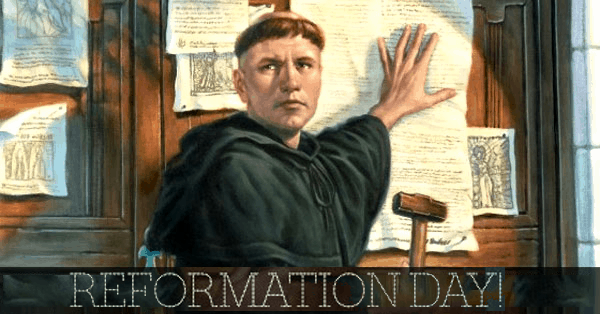
What is Reformation Day? To answer that question, let’s ask another question. When is Reformation Day? It’s October 31; it commemorates the events of October 31, 1517. On that day, Martin Luther, an Augustinian monk, nailed his Ninety-Five Theses to the church door in Wittenberg, Germany. Now, why would Luther do that? To answer this question, we need to introduce a few more characters.
One of those characters was Albert of Brandenburg. Albert was not old enough to be a bishop, yet in 1517, he was already bishop over two cities, which was against church law. On top of that, he wanted to be archbishop of Mainz. To hold three offices was also against church law, which meant that Albert needed a papal dispensation.
So now, Pope Leo X enters our story. Leo was from the Medici family of Florence. The Medici were a prominent banking clan and patrons of the arts. It was Leo who brought Michelangelo in to paint the Sistine Chapel ceiling in the Vatican. Albert met with Leo about getting a dispensation, and like good businessmen they struck a deal. For ten thousand ducats, Albert could have his three bishoprics. But Albert had a problem: his money was largely in land and not in cash, so he needed to raise the money.
The real main character in Reformation Day is not Luther. It’s the Word of God.
And so another character enters, the enterprising friar Johann Tetzel. He sold indulgences on Albert’s behalf, and some of the money went to help Albert pay the cost of becoming archbishop of Mainz. These indulgences were supplied by the pope and not only provided for past sins to be forgiven but for future sins to be forgiven as well. And these indulgences also allowed the buyer to get his relatives out of purgatory. And so Tetzel began selling these indulgences, using a jingle to sell them: “As soon as a coin in the coffer rings, the soul from purgatory springs.”

This development deeply troubled Luther. He saw how these things were contrary to the church’s doctrine at the time, and he watched as the people under his care went to buy Tetzel’s indulgences. So, he did what a scholar could do. He went into his study and penned his Ninety-Five Theses to invite public debate. He posted the theses on October 31.
The very first thesis says this: “Our Lord and Master Jesus Christ, when He said ‘Repent,’ willed that the whole life of believers should be repentance.” It’s fascinating that Luther makes this reference to Jesus’ calling people to “repent” in Matthew 4:17. There is something else that came into play here, something else that explains Reformation Day.
In 1516, the Greek New Testament was published by the humanist scholar Desiderius Erasmus. And when Luther read the Greek New Testament, he realized that the Latin Vulgate—for centuries, the official text of the church—was wrong. The Vulgate had translated the Greek word in question—rendered in English as “repent”—as “do penance.” This translation had served for centuries to support the Roman Catholic sacramental system.
The real main character in Reformation Day is not Luther. It’s the Word of God. What Luther discovered as a monk is that for centuries, the true teachings of the Word of God had been hidden by century upon century of tradition. That’s what Reformation Day is about: it’s about pulling back the covers and releasing the power of the Word of God and the beauty and the truth of the gospel. That’s why we celebrate Reformation Day.
Stay connected with 5 Minutes in Church History by getting the weekly podcast on iTunes, SoundCloud, or via RSS. You can also subscribe to the blog via RSS and follow us on Twitter and Facebook.
(This podcast is by Ligonier Ministries. Discovered by e2 media network and our community — copyright is owned by the publisher, not e2 media network, and audio is streamed directly from their servers.)